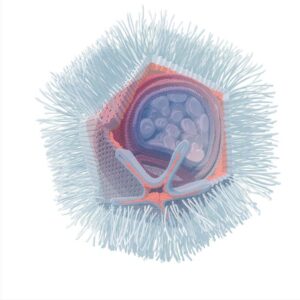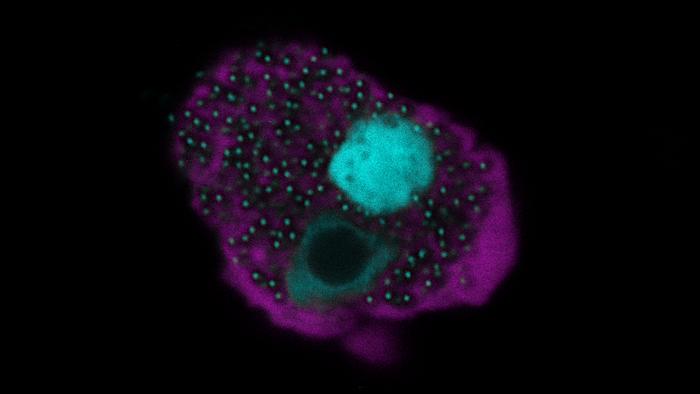Metagenomic studies suggest that giant viruses—currently known as Nucleocytoviricota but formerly referred to as Nucleocytoplasmic large DNA viruses (NCLDV)—have an enormous amount of diversity and can be found in almost every environment around the world. Despite this almost ubiquitous distribution, the number of protist and algal hosts that the viruses have been isolated from is very small.
Now, a new report describes the first large viral isolate that replicates in the amoeboflagellate Naegleria—the genus that comprises the incredibly deadly human pathogen Naegleria fowleri.
The research group from the University of Vienna went on to uncover the structure and infection cycle of the giant virus known as Catovirus naegleriensis. The researchers also show how the virus adapted to its Naegleria host using fluorescence in situ hybridization, electron microscopy, genomics, and proteomics.
This work is published in Nature Communications in the paper, “A giant virus infecting the amoeboflagellate Naegleria.”

Naegleri species are single-celled amoebae, found globally in water bodies. Notably, one species, Naegleria fowleri, thrives in warm waters above 30°C and causes primary amoebic meningoencephalitis (PAM), a rare but almost invariably fatal brain infection.
Giant viruses were identified two decades ago, primarily infecting single-celled organisms. These viruses rival bacteria in size, boasting unique structures and genetic traits previously thought exclusive to cellular life. Their discovery sparked debates over the definition of viruses and the origins of life.
Naegleriaviruses are taken up mistakenly as a food source but destroy their amoeba hosts within just a few hours. They exhibit a structure familiar in giant viruses, infecting host cells via a stargate structure that facilitates DNA entry. Within hours, a structure known as a virus factory forms inside the amoeba cell, replicating viral genetic material outside the nucleus and assembling hundreds of new virus particles. To keep the host cell alive during this process, Naegleriaviruses likely use special proteins that suppress the cell’s natural immune response, preventing premature cell death. Only after successful viral replication does cell destruction and virus release occur.
“The newly identified Naegleriaviruses may not be suitable to treat Naegleria infections, given the challenging accessibility of the brain, where infections occur,” noted Matthias Horn, PhD, head of the department of microbiology and ecosystem science at the University of Vienna. “However, this discovery opens the door to the possibility of preventative treatment of at-risk water bodies, such as during swimming pool water treatment, but this would first require further research. Regardless, the discovery of these viruses will enhance our understanding of both Naegleria biology and the viruses that infect them.”


